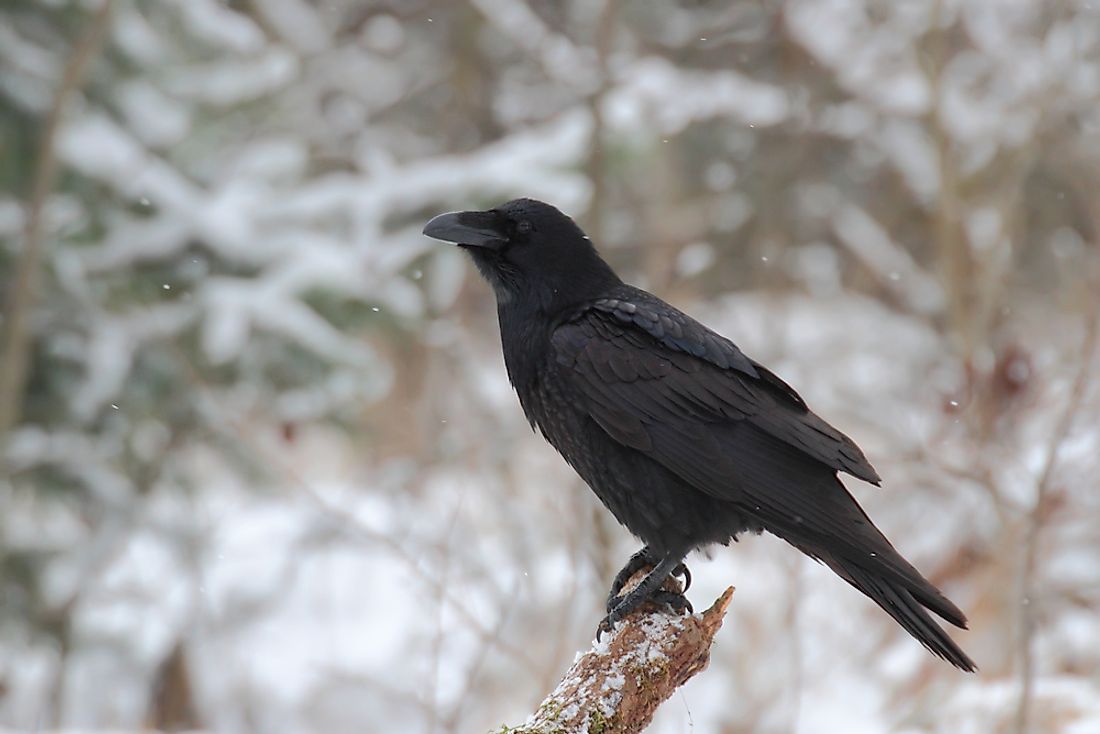What is the Difference Between a Raven and a Crow?

Difference between Crows and Ravens
Crows and ravens are birds of the Corvidae family that are mainly renowned for their intelligence in tool use, enemy identification, problem solving and mimicry. Both birds generally have black and glossy bodies which may have small patches of gray or white. The two birds are found in practically all habitats of the world and exhibit similar characteristics, making it difficult to distinguish them apart. Both crows and ravens are omnivores and keep food cashes for harsh seasons. Although the birds share many similar characteristics, there are a variety of subtle differences in their respective behaviors that help differentiate them.
Physical Differences
Crows and ravens differ physically from one another, their size being the most noticeable. Ravens are larger than crows, making them the largest perching birds. Crows have a smooth texture whereas the raven has a dense and shaggy plumage particularly around the throat. The bill of the raven is also heavier than the crow's bill. During flight, the spreading of the tail can distinguish the crow and raven apart. The tail of the crow spreads into a fan-like structure while the tail of the raven spreads into a wedge shape. The evenness of the crow's feathers contributes to the fan-like tail opening whereas the raven's longer middle feathers contribute to the wedge shape.
Sounds and calls
The calls made by ravens and crows are used as a method of distinguishing them apart. While both birds have hoarse calls with various vocalizations that change during different activities such as arrival, departure, and communicating different messages, their sounds are completely different. The crow makes “koww” and “eh-aw” vocalizations among other discrete and distinct sounds while the raven makes gurgling and guttural croaks. While sounds and calls made by the raven and crow vary within their species, the crow’s call is often a caw while that of the raven is a hoarse croak.
Behaviour
Crows and ravens exhibit different behavioral patterns during foraging and movement which aid in telling them apart. Ravens are solitary birds which feed and move in pairs or small flocks. The pairs formed by ravens may last a lifetime. Crows, on the other hand, are social birds moving and foraging in large groups called murders and live in communal roosts of up to ten thousand birds during winter months. During flight, ravens have more stability while soaring therefore they have reduced wing flapping compared to crows. Unlike crows, ravens are recognized for their acrobatic behavior during flight which is meant to attract mates. The intelligence of ravens and crows as well as their dietary patterns keep them relatively safe from predation by many animals, making their populations quite high. Some people keep ravens and crows as pets when captured during their juvenile stages. Various groups of researchers are interested in their intelligence and behavioral patterns such as communication. The birds are destructive to farms but can sometimes be beneficial as they feed on agricultural pests. In countries like the US, the birds are protected under the law and hunting is regulated by these laws.











